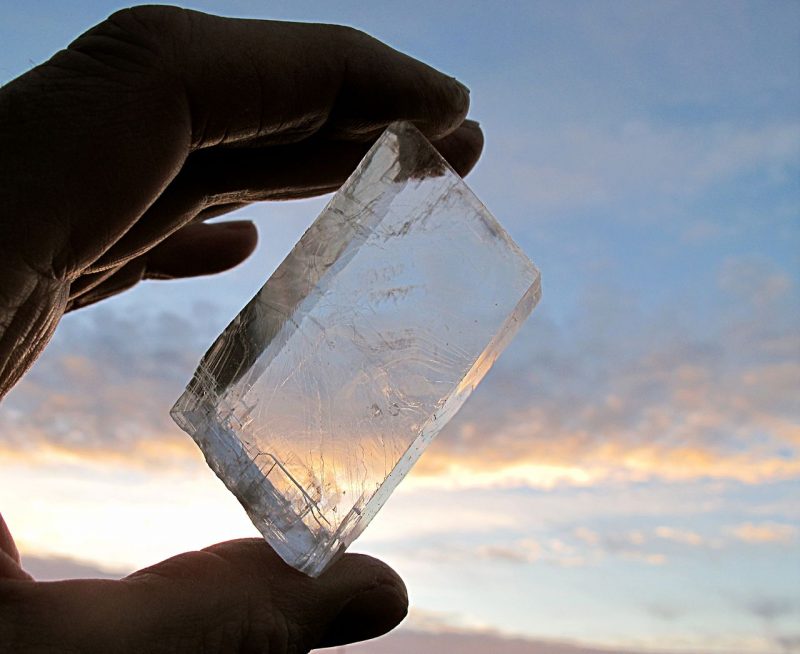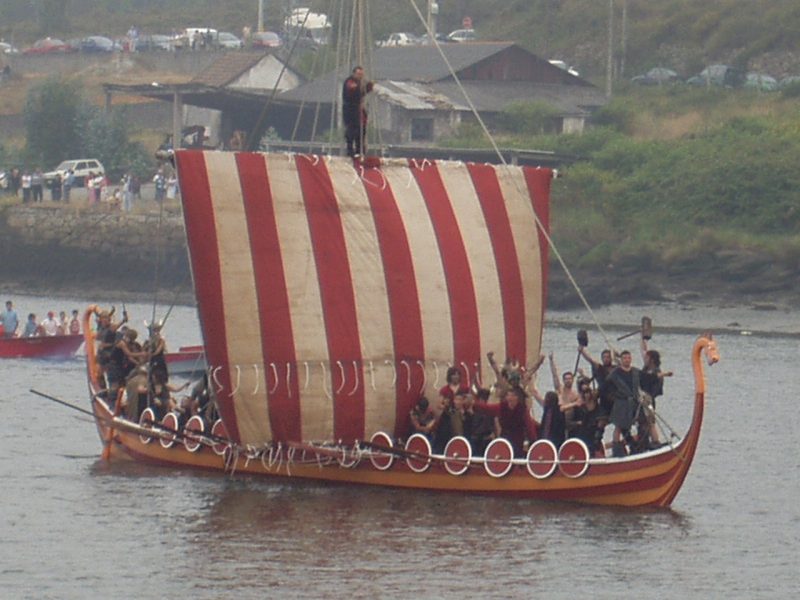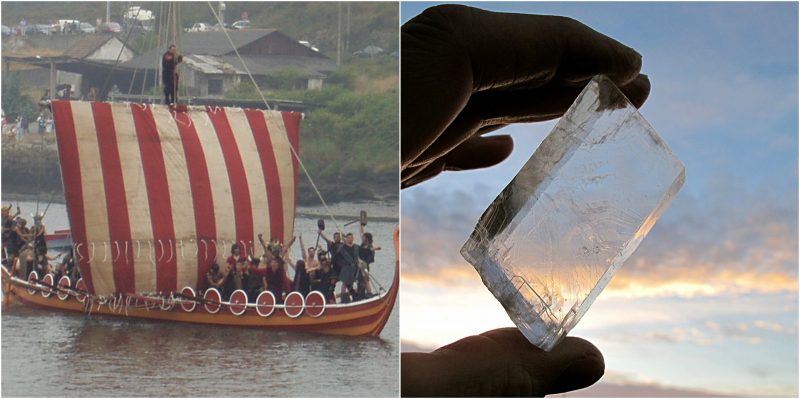Archaeologists and researchers who specialize in studying the Vikings have learned that the people who discovered Iceland, Greenland, and North America navigated through to these lands by using landmarks, birds, whales, and really anything else that might direct their travels.
It is also possible that the Viking sailors used the positions of stars at night and the sun during the daytime. To add to that, archaeologists believe that they have found a Viking sundial that helped the seafarers as well.
While many other ancient sailors relied on the magnetic compass, the Vikings would have struggled to find their way through the night without one. However, there are several documents that suggest that in Nordic travels there were other sources, like the solarsteinn, also known as sun-stone.
The documentation does not state what the sun-stone was used for, but it has been studied for decades. Archaeologists believe that it must have been some kind of navigational tool. In addition, the Vikings may have used that tool by interacting it with sunlight and crystal. The crystal then reflected a certain way to help them navigate, even through overcast conditions.
This idea means that the Vikings discovered the basics of measuring polarized light centuries before it was scientifically explained. Today, that same method is used to identify and measure different chemicals. Each day, scientists are getting closer to establishing whether or not this form of navigation was actually used, or if this is just an interesting theory.

The way this kind of navigation works is that the light from the sun is scattered and then polarized by the atmosphere. This occurs when the light is absorbed and then re-emitted with the same energy by air molecules in differing amounts, depending on the light’s wavelength.
The blue end of the light spectrum scatters more than the red. This has been explained by the British physicist Lord Rayleigh in the 19th Century. The idea of scattered particles explains why the sky is blue.
Scattered light waves are polarized to a certain extent, which means they vibrate on one plane rather than in all directions at one time. The amount of polarization that a beam of sunlight undergoes depends on the angle between it and the viewer. It also depends on whether the light has been further scattered by cloud and other particles, which causes depolarization.
For example, around the coastline of Norway and Iceland there are crystalline chunks of calcium carbonite, otherwise known as calcite or Iceland spar. When polarized sun enters a calcite crystal, it doubles in intensity.
Calcite is bi-refringent, which means it splits the light that passes through it into two separate waves. That light is bent, or refracted, in different directions with different intensities. The different intensities of the two light waves depends on how the original light is polarized, its position, and the orientation of the crystal.
Tourmaline and cordierite are crystals with similar properties. However, they do not split like calcite; they are more dichroic, meaning they absorb one component of polarization more strongly than the other. The dichroic properties also depend, again, on how the original light is polarized, its position, and the orientation of the crystal.

Sounds like a lot to absorb, right? If this theory is true, then the crystal and light could have been a useful tool for the sailors to estimate the position of the sun. This would then allow them to determine the direction of the geographic north. They did not need to know the science behind it in order for it to work.
Once again, if that theory is true, then that means the Vikings had the sunstone crystals on their ships and knew what they were doing with them. However, is it possible that they could actually determine the meaning of the difference in light? Was it even actually detectable to their eyes? The reason scientists are asking this is because all crystals have imperfections, and depolarization is possible. If that’s the case, would sailors be able to rely on solely the crystals they had on board?
Gabor Horvath and his team looked at whether or not the optical signals from the three types of crystals were strong enough to be detected. They also looked at whether or not there was enough accuracy for it to be possible to predict the position of the sun under a cloudy sky. In order to do this, they had to simulate the conditions, including the position of the sun, that are present during a voyage between Norway, southern Greenland, and Newfoundland.
The team of researchers found that in clear skies, the polarization was high. They also found that all three crystals did provide great signal and accuracy. In the lightly cloudy conditions, the polarization was somewhat reduced, but was high enough.
The results showed that tourmaline functioned better than calcite. Only very pure calcite performed on a similar level as the other two. If the sunlight was low, the calcite appeared to give the best results in predicting the sun’s position. When it was a thick, cloudy condition or foggy, the errors of the measurements were too high for all three crystals.
Horvath’s team is now looking at the errors involved in predicting the position of geographical north by using this information.
If their method does not work under cloudy conditions by using the imperfect crystals, then the whole theory could be wrong. If that’s the case, then on clear days it would have been easier to just use sundials.
